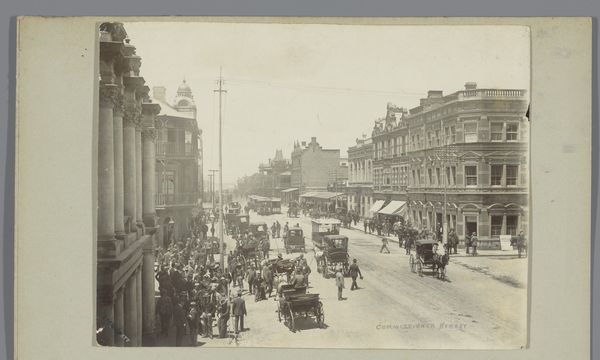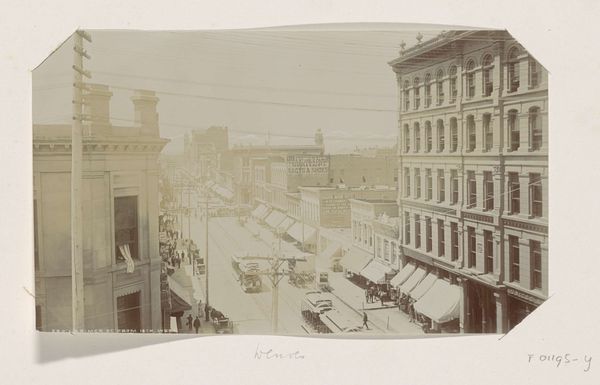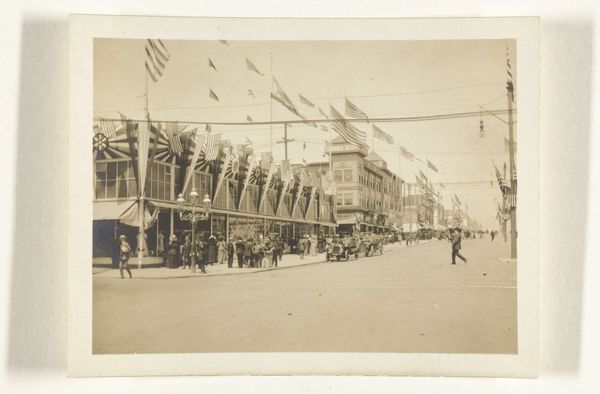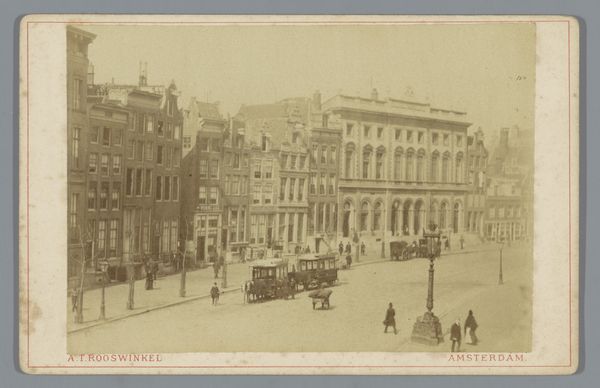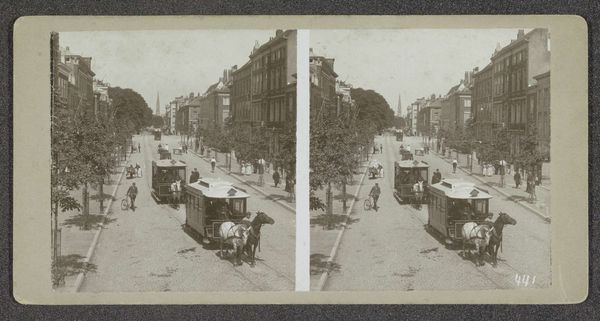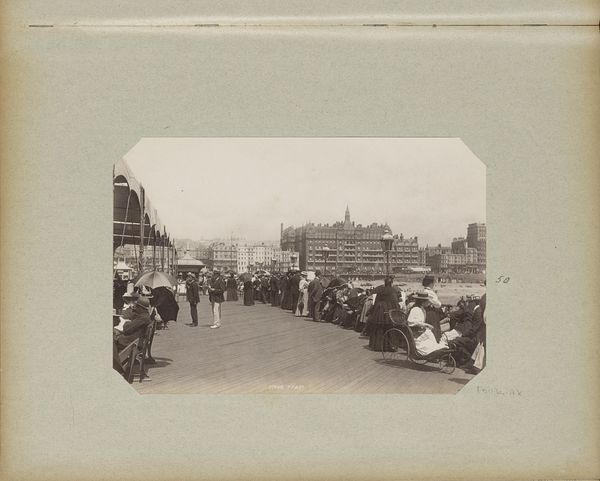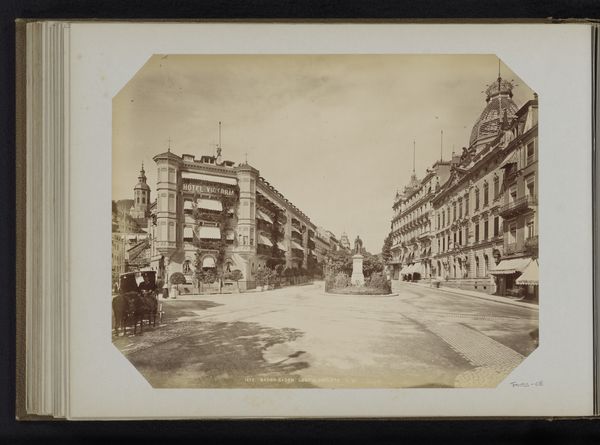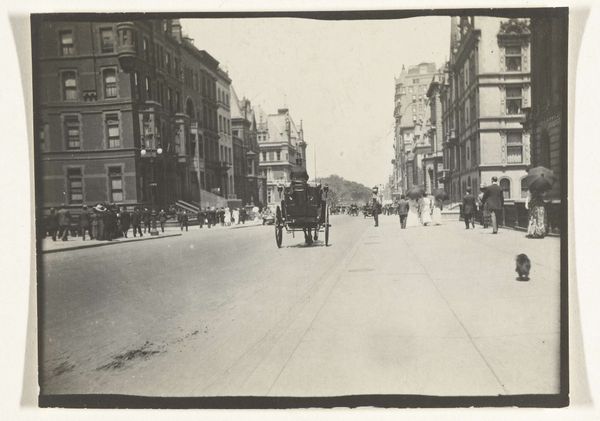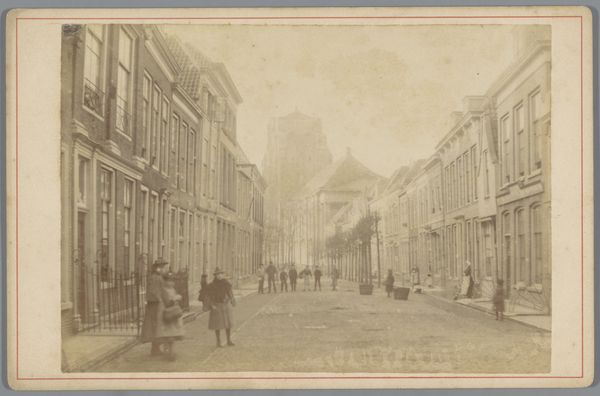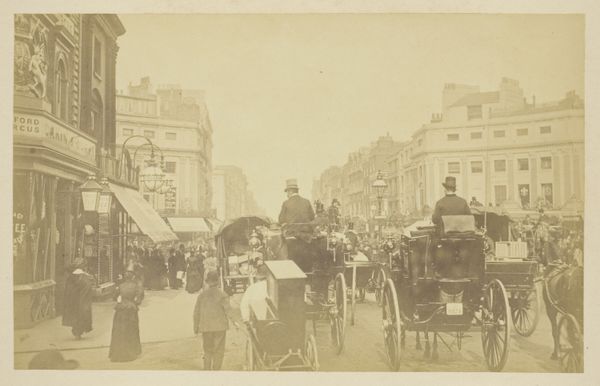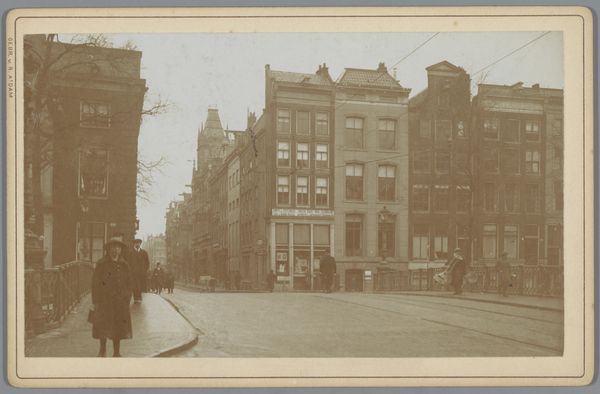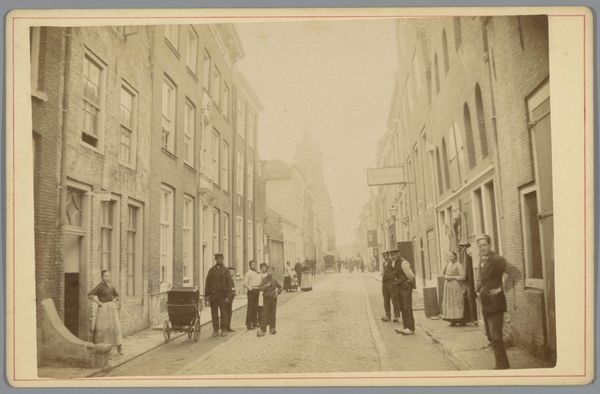
photography, gelatin-silver-print
#
african-art
#
street-photography
#
photography
#
gelatin-silver-print
#
cityscape
#
realism
Dimensions: height 258 mm, width 360 mm
Copyright: Rijks Museum: Open Domain
Editor: Here we have James Goch’s “View of Commissioner Street in Johannesburg,” taken in 1896. The gelatin silver print has a slightly sepia tone and feels surprisingly modern for something over a century old. The street bustles with people and horse-drawn carriages. What does this image tell us about Johannesburg at that time? Curator: It tells us a lot about the burgeoning aspirations of a colonial city, consciously modelling itself on European precedents. Johannesburg at this point was barely ten years old, a product of the Witwatersrand gold rush. This image is about staking a claim, literally and figuratively. Editor: How so? Curator: Consider the prominent buildings and the width of the street. This is meant to convey solidity, permanence, civilization. It is carefully composed to evoke the architecture of European cities, projecting an image of power and progress. Editor: I see what you mean. There's a clear intention to convey a specific message, beyond just capturing a moment in time. Is there any suggestion of the tensions inherent in a colonial context? Curator: Precisely! Look at the figures themselves – what stories do they not tell us? Where are the faces of the indigenous population? The photograph participates in a visual project of colonial erasure, a reimagining of space to normalize occupation. It reminds us that photography, especially at this time, was never neutral. It played an active role in shaping public perception and reinforcing socio-political hierarchies. Editor: That's a really powerful point. I initially just saw a bustling city scene, but you've completely reframed it, revealing the underlying power dynamics at play. Curator: Looking at the image as a record of city life versus unpacking it for colonial traces completely shifts how we value the photograph, doesn't it? Editor: Absolutely. I’ll definitely be thinking about this photograph in a different way now! Thanks for opening my eyes to the complex politics embedded within such a seemingly straightforward image.
Comments
No comments
Be the first to comment and join the conversation on the ultimate creative platform.
